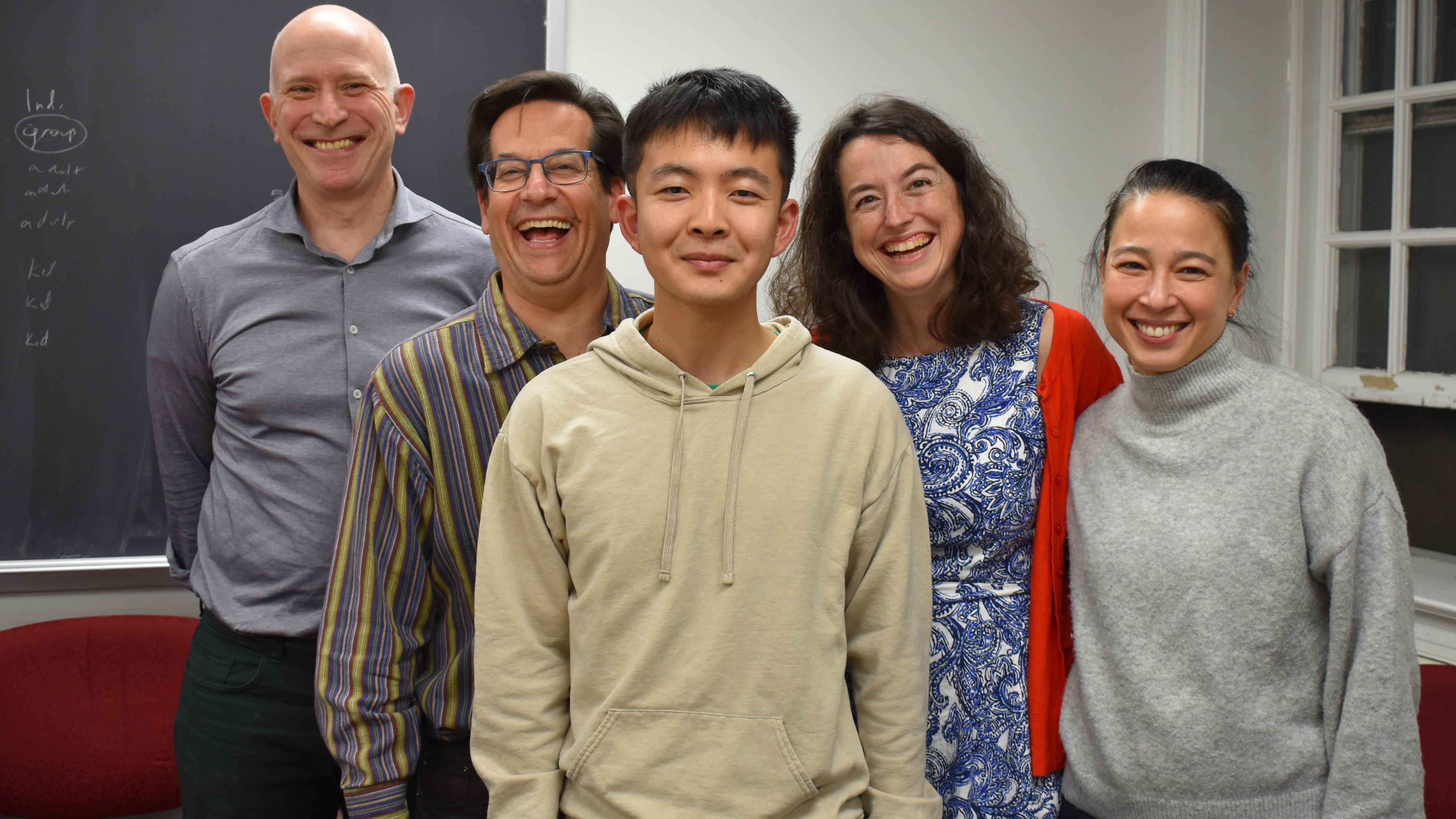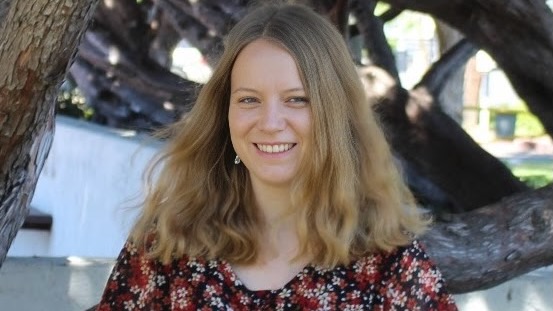Jack wins Jean Berko Gleason Award for BUCLD 49
August 30, 2024

Children respect the presuppositions of using “the”.
Congratulations to Jack Yuanfan Ying, whose abstract with Jeff, Alexander and Valentine – "Overcoming performance issues: Children respect presuppositions of "the"-expressions" – has won the Jean Berko Gleason Award for "the outstanding student paper" to be presented at the forthcoming 49th Boston University Conference on Language Development (BUCLD 49), based on its strong reviews. The abstract, included below, reports a new elicited production study on children's use of "the", which suggests, contrary to prior work, that we have little reason to believe that four-year-old children have the wrong meaning for “the” or lack the pragmatic capacity to use it properly.
The Berko Gleason Award has been won by a Terp at least once before: in 2013 it was given to Megan Sutton and Mike Fetters for their paper at BUCLD 38 with Jeff, claiming that "Principle C Effects are Structural, not Linear, in 30 Month-Olds," which was prelude to a 2021 paper in Cognition, "The hunt for structure-dependent interpretation: The case of Principle C."
Abstract
Elicited production studies have suggested that children up to the age of 5 sometimes use singular “the”-expressions in non-adult-like ways, i.e., when the referent is not familiar to interlocutors (Maratsos 1974; Schaeffer & Matthewson 2005; Schafer & de Villiers 2000) or not unique (Karmiloff-Smith 2005, van Hout, Harrigan & de Villiers 2010; Wexler 2011). However, unnatural settings in prior studies may be responsible for children’s production errors, as children show evidence of adult-like usage in natural production (Ying, Hacquard, Williams & Lidz 2023). We present a new elicitation-through-conversation study that creates a more natural production setting and find that 4-year-olds are sensitive to the presuppositions of “the” even in elicited production.
Our task requires participants to consider the perspective of a listener and judge whether, within the domain of mutually known referents, the intended referent is the unique satisfier of the noun in the description. Kermit is unable to see objects on the other side of a wall, which are visible to participants (Figure 1A), and asks participants “what do you see?” (Question 1). We expect this to elicit indefinite answers (e.g., “two bags” or “a bottle and a mug”), since the referents are not in the visual common ground. Elmo then appears in front of the wall and takes away one of the two objects, while laughing. Kermit asks “what happened?” (Question 2), eliciting expected definites for unique referents (e.g., “Elmo took the mug” when there is just one mug) but indefinites for non-unique ones (e.g., “Elmo took a bag/one of the bags” when there are two). Specifically, we adopt a 2 (Uniqueness) × 2 (Question: 1 vs. 2) × 2 (Age: adult vs. children) design where all comparisons are within subjects. If children have adult-like knowledge of “the”, we expect their proportion of definites to vary as a function of Uniqueness and Question but without interaction with Age.
Our results indicate that children (N = 12; target N = 24), just like adults (N = 12), respect the presuppositions of “the”. They (mean age = 4;6;28, range = 3;10;21 - 5;0;4) never used definites when intended referents were unfamiliar to the listener; they mostly used definites (94.4%; adult control: 98.6%) to refer to a unique referent and much less so (25.8%; adult control: 25%) for a non-unique one (Figure 1B, 1C, 1D). A 2×2×2 mixed ANOVA confirms children’s adult-like use of referring expressions. We find significant main effects of Uniqueness (F(1, 20) = 71.885, p < .001) and Question (F(1, 20) = 211.391, p < .001) but not Age; the interaction is significant between Uniqueness and Question (F(1, 20) = 71.885, p < .001) but not with Age.
Our findings suggest that rates of “the”-misuse in past studies may have been boosted by misleading elicitation settings. The settings often make a referent uniquely salient, allowing definite reference even when it is not the sole satisfier of the noun in the broader context. By controlling for this and incorporating natural turn-taking, we find that children show adult-like production of referring expressions. This implies, contrary to prior work, that we have little reason to believe that children have the wrong meaning for “the” or lack the pragmatic capacity to use it properly.



